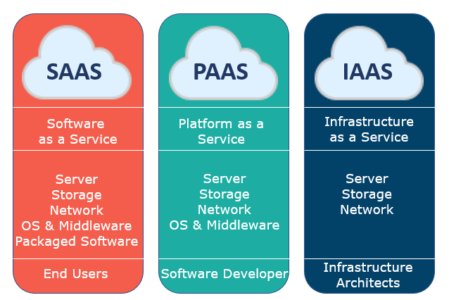Latest Cloud Services Press Release: Innovations and Sector Updates
Latest Cloud Services Press Release: Innovations and Sector Updates
Blog Article
Achieve Seamless Scalability With Cloud Solutions
In the ever-evolving landscape of cloud services, accomplishing seamless scalability stands as a foundation for modern-day businesses seeking to remain competitive and adaptable. The ability to effortlessly increase or acquire resources in action to altering needs is an essential advantage in today's busy digital setting. By grasping the art of scalable cloud services, organizations can not just enhance efficiency and improve procedures however also lead the way for future growth and innovation. The quest for smooth scalability with cloud solutions unveils a world of possibilities for those going to welcome the transformative power of dynamic resource management.
Advantages of Cloud Scalability
Cloud scalability supplies companies the flexibility to dynamically readjust resources based on need, making certain ideal efficiency and cost efficiency. One crucial benefit is the capability to range sources up or down rapidly in feedback to varying work. This agility makes it possible for companies to fulfill changing consumer needs without over-provisioning resources, eventually resulting in cost savings. Scalability also improves performance by making certain that systems can handle enhanced website traffic or workload without experiencing downtime or slowdowns. By effectively allocating resources, organizations can keep high levels of efficiency during peak times without unnecessary expenditures throughout quieter durations. Furthermore, cloud scalability advertises advancement and testing by allowing organizations to conveniently evaluate originalities and scale them as required. This versatility encourages a society of continuous improvement and adaptation, enabling companies to remain affordable in a rapidly developing market landscape. Inevitably, the advantages of cloud scalability expand past expense savings to encompass better performance, dexterity, and advancement.
Secret Attributes for Scaling
Reliable scaling in cloud solutions depends on key functions that enable companies to readjust resources dynamically based upon need. One essential function for scaling is elasticity, permitting resources to scale up or down in feedback to varying work. This guarantees that companies can fulfill efficiency needs without over-provisioning sources. One more vital attribute is scalability, making it possible for systems to take care of raised work by including sources perfectly. This feature is essential for suiting growth without jeopardizing efficiency. In addition, automation plays a vital function in scaling by automating the provisioning and de-provisioning of sources based upon predefined plans. Automation decreases human intervention, improves performance, and guarantees fast response to transforming demands. Monitoring and analytics tools are additionally vital for scaling, giving understandings into resource usage, efficiency metrics, and prospective traffic jams. These devices allow companies to make educated decisions and enhance source allotment for effective scaling. Generally, these crucial attributes jointly empower organizations to attain seamless continue reading this scalability in cloud solutions.
Carrying Out Auto-Scaling Methods
To successfully enhance resource appropriation and adjust to differing workloads, organizations must strategically execute auto-scaling strategies in their cloud services framework. Auto-scaling permits systems to instantly change the variety of compute resources based upon real-time demand. There are various auto-scaling strategies that organizations can use, such as anticipating scaling, which uses historical data to anticipate future resource demands, and reactive scaling, which reacts to current work adjustments.

Ideal Practices for Scalability
For companies aiming to boost their scalability in cloud services, carrying out best techniques is crucial for optimum performance and resource monitoring. One secret best practice is designing applications with a microservices design. This method breaks down applications into smaller sized, independent services that can be deployed, upgraded, and scaled independently, permitting greater versatility and scalability.
An additional vital method is utilizing containerization modern technology, such as Docker or Kubernetes. Containers enable the product packaging of applications and their dependencies right into isolated units, making it much easier to scale parts independently and deploy them constantly across various atmospheres.
In addition, executing automated release and infrastructure as code (IaC) can improve scalability initiatives (linkdaddy cloud services). Automation tools like Terraform or Ansible assistance in provisioning and taking care of sources effectively, decreasing manual errors and enabling fast scalability
Additionally, monitoring performance metrics, establishing up signals, and conducting regular capability planning are important practices to make sure positive scalability monitoring. By adhering to these finest methods, companies can attain seamless scalability in their cloud services while maximizing performance and resource application.
Tracking Performance Metrics
When analyzing the performance of cloud solutions scalability, very closely monitoring efficiency metrics is necessary for guaranteeing ideal performance and source allocation. By continually tracking key see this site efficiency signs (KPIs) such as reaction times, throughput, resource, and latency application, organizations can obtain beneficial insights into the health and effectiveness of their cloud framework. Keeping track of efficiency metrics allows for the early detection of potential traffic jams or concerns that could influence scalability, enabling proactive steps to be taken to address them prior to they escalate.
Final Thought
In conclusion, accomplishing seamless scalability with cloud solutions is essential for organizations to enhance efficiency, explanation boost development, and keep high performance levels during peak times. By leveraging the benefits of cloud scalability, implementing auto-scaling methods, using vital functions such as flexibility and automation, and following ideal methods like application style and efficiency tracking, organizations can efficiently scale their systems while making the most of source usage and efficiency.
The mission for smooth scalability with cloud services unveils a world of possibilities for those prepared to welcome the transformative power of vibrant resource monitoring.
Cloud scalability uses organizations the flexibility to dynamically change resources based on need, making sure optimal efficiency and expense efficiency. An additional essential function is scalability, making it possible for systems to deal with raised workload by including resources flawlessly.For organizations intending to enhance their scalability in cloud solutions, applying finest techniques is vital for optimal efficiency and resource administration.When evaluating the performance of cloud services scalability, closely checking performance metrics is imperative for making certain optimal performance and source allocation.
Report this page